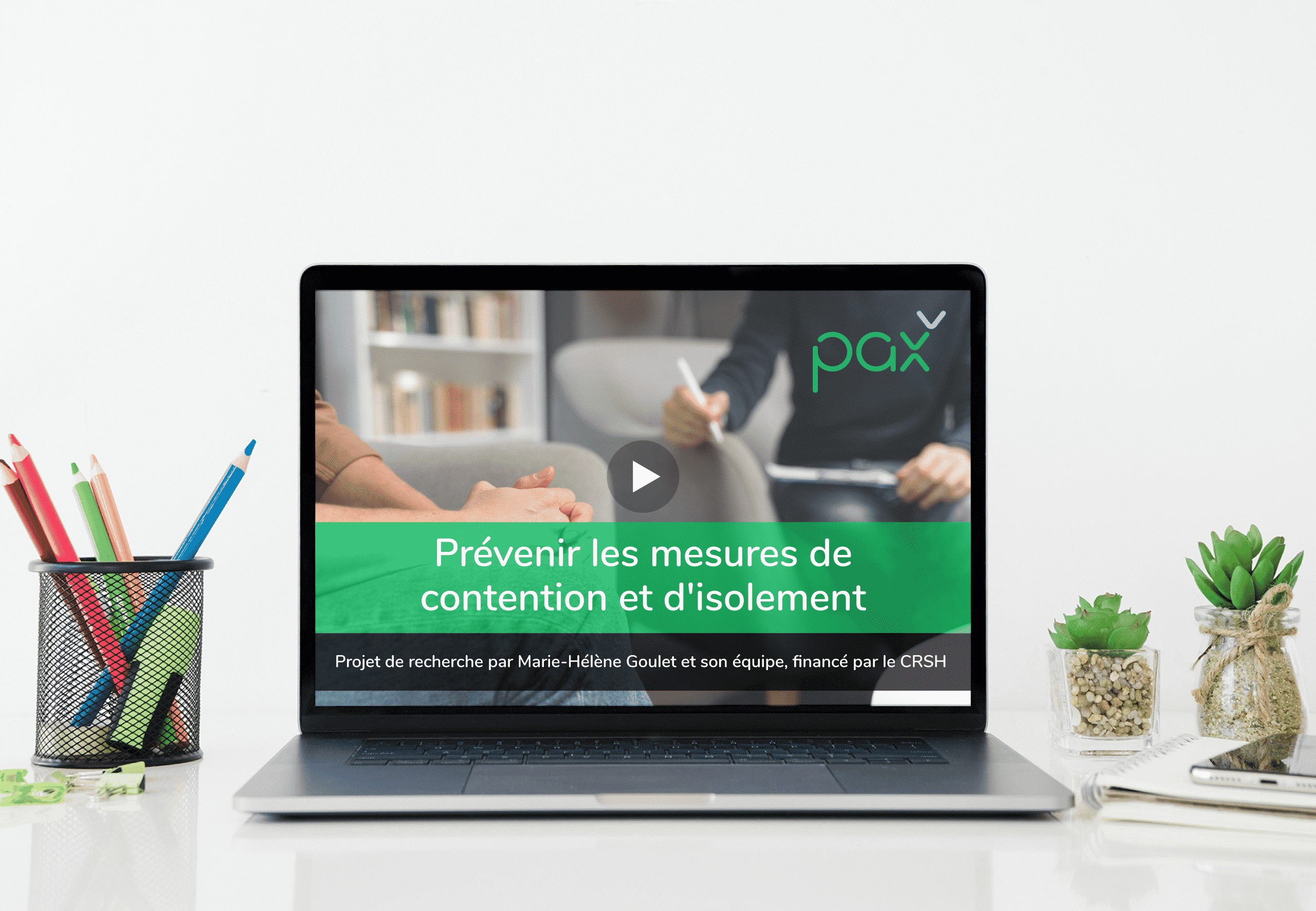
Marie-Hélène Goulet is an Assistant Professor at the Université de Montréal and a regular researcher at the Research Centre of the Institut universitaire en santé mentale de Montréal.
She and her team were recently awarded a SSHRC grant for a project on the prevention of the use of control measures with people hospitalized in mental health or psycho-legal care units in Quebec. The research team wanted to present the project outline to the hospital partners in a video clip.
We have leveraged our combined expertise in the following areas:
The visual identity is the graphic identity card that allows people to recognize an entity. Logo, colors, font, pictograms, type of photos, in short, all visual elements! Method used: questionnaire completed by the research team, analysis of the research summary, interview with our graphic designer Sophie.
For the logo, it was important to avoid clichés and stigmatizing images. With its rounded and open design, the logo for the Pax project evokes softness, peace, lightness and non-violence. Nothing touches, crosses, is sharp or gets in the way. The concept of freedom is reinforced by the blue graphic element, which can be likened to a butterfly or a bird in flight. It is simple, relevant and timeless.
Regarding the choice of colors, blue and green, they carry calm, soothing, positive, harmonious, fluid and nature-like meanings.
The objective of the video clip is to get a message across in a format that combines visual and auditory stimuli in the right proportions and requires less attention from the audience than other forms of communication. The research team chose a video that did not require filming and was produced using video banks. The chosen method: analysis of the research summary, definition of objectives and target audiences, scripting, validation and adjustment, "letting it rest", choice of image and video banks, inclusion of the graphic charter, editing.
The first four steps are the most important and usually take place over a few weeks. They are essential to defining the core of the message and the best way to deliver it. Far from clichés and " striking " images, the chosen video sequences aim to show different types of hospital environments, since the team is studying whether the type of therapeutic environment has an influence on the use of control measures. The rhythm of the music becomes progressively motivational and the brightness of the segments is increasingly lighter to support the evocations of the logo.
The last step was the promotion of the video on one of our blogs and on two social media, Linkedin and Facebook. The promotion of the video to potential project partners was handled by the research team. The chosen method: realization of a 6-second teaser, phased publications on several profiles, identification and sharing of publications with key people and institutions.
The video offered a summary of the research project to gauge the interest of institutional directors in participating in it. Later in the process, it will be the care units that will be informed. From ideation to promotion of the video, this second case study presents some of our expertise and services in creation and consulting. This type of clip can not only be used to present a project to research partners, but is also suitable for presenting research results, recruiting participants or even team members. For more information, contact us.